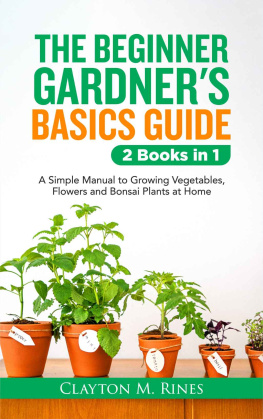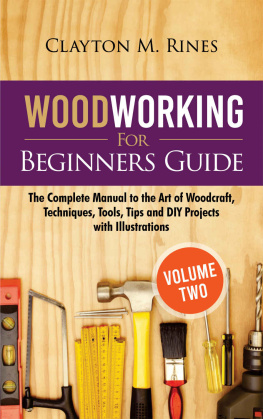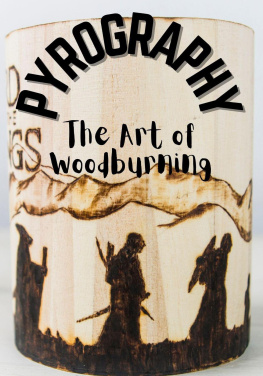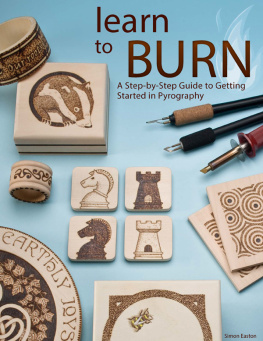The Beginner Gardeners Basics Guide 2 Books in 1
A Simple Manual to Growing Vegetables, Flowers and Bonsai Plants at Home
Clayton M. Rines
Acknowledgments
This book could not have been written without the guidance and generosity of everyone I have come in contact with one way or another. Your influences are all over this book. Thank you.
Dedication
This book is dedicated to everyone seeking knowledge out there.
Copyright 2021 Clayton M. Rines
The author retains all rights. No part of this document may be reproduced or transmitted in any form or by any means, electronic or mechanical, including photocopying, recording, or by any information storage and retrieval system without permission in writing from the author. The unauthorized reproduction or distribution of this unique work is illegal.
Disclaimer
All the information contained in this book is purely for educational activities only. The writer does not assert the accuracy or wholesomeness of any info gotten from this book. The views contained within the pages of this material are those of the author in its entirety. The author/writer will not be held accountable or liable for any missing information, omissions or errors, damages, injuries, or any losses that may occur from the use of information gotten from this book.
Contents
Book One
The Essential Manual of Urban Gardening for Beginners
A Step-by-Step Guide to Raised Bed Gardening for Cultivating a Thriving Flower, Herbs, Fruits and Vegetables Garden all Year Round

Introduction
There has been a recent buzz around raised bed gardening; though, many people think it is quite expensive and not worth the stress; the truth is that cultivating any crop in a raised bed is ultimately more cost-effective than gardening with the conventional method. I am referring to plants collectively and not sticking to vegetable planting as anyone would expect. I am generalizing because a raised bed garden is not limited to vegetables growing. Still, you can plant just about any plant that you can think of in it, ranging from herbs, fruits, flowers, and infamous vegetables.
I have written a few books on raised bed gardening, where I discussed the primary aspects of raised bed cultivation. This book will convince you, with sound arguments, to consider raised bed gardening, and give it a trial. It is the method of gardening that will yield more than what you invested in time and effort. Most of the crops discussed in this book are vegetables because I cultivate vegetables in my garden. As I said earlier, you can plant whatever crosses your mind in a raised bed garden, from flowers to herbs, so whatever I discuss about vegetables will work for other plants.
In my bid to convince you about giving raised bed garden a trial; this gardening method has a few advantages below:
Effortless operation: the bulk of the work in a raised bed garden, including the building and filling-in, has been done for you. Tending the bed and maintaining it is much more convenient to achieve than the standard method that involves dredging up the soil and sowing in rows like it is done in vegetable planting. Please bear in mind that the word 'standard' does not mean general because many countries now practice raised bed gardening. Regions characterized by a lot of mountains also have shifted to the terraced method of planting and cultivating, which can be likened in several ways to raised bed gardening.
The primary upside about a raised bed's operation is that no one steps or walks on a raised bed instead of what happens in the standard method of gardening. This will result in easy to weed and turn because it is loose and not compressed like a conventional garden. The bed's height does not call for walking on it; if on occasion you must walk across the garden, all you have to do is place a log over and move across it than on the bed itself. You can as well use this plant as a sort of workbench to accommodate your tools. The log can also serve as a seat if you construct it around the bed; you can easily manage and maintain your garden from this seat.
Simple conversion: a raised bed is flexible and amenable to several growth requirements. You can make a greenhouse for vegetable or fruit cultivation from a basic construction built with transparent polythene and an inch of plastic tubing. If your greenhouse was supposed to last for only the glacial spring periods, you could keep insects and birds at bay by throwing netting over the simple structure.
A raised bed can also cultivate climbing plants like bean or pea if you add the skeleton to the structure mentioned in the paragraph above. I bet it just crossed your mind that this is also achievable with the conventional garden, fair enough, but it is more stressful to erect the frame and tend to the crops in a standard garden with a framework. If you constructed your raised bed with lumber, as is the norm, you just need to fix any developing frame of your choice to the entire bed system. Attaching the frame with screw nails instead of common nails will ease the detachment later if there is a need for it; the best part? The frame will stay intact.
Reduced weeding: there should be a book on why weeding is the most unpleasant gardening activity. Employing the raised bed gardening method reduces the rate of weed growth and, consequently, weeding. Weed growth is suppressed by using fresh soil collected specifically to cultivate your desired plants, not on some soil that is probably housing an unimaginable amount of weed seeds.
Whatever you will fill your bed with is dictated by the crop you intend to plant, but you should essentially fill with compost blend that contains lots of organic matter like rotten manure. You can choose to combine the compost with garden soil but ensure that the mixing proportion does not exceed 75% of compost to 25% of soil. This mixing specification will give you a soil that can't be pressed in and, at the same time, ensure that you are not transferring weed seeds into the garden. Reduced weed growth automatically reduces weeding and saves time.
Though the garden will always require weeding, it will be drastically reduced and easy to adhere to these instructions
Judicious space use: people with large plots and small plots alike can cultivate with the raised bed system of gardening. For instance, a 12 x 9-foot garden plot can house a raised bed garden of about 8 x 5 feet. In this example, there would be a two-foot space all around the bed from which you can easily care for your plants. Though everyone would agree that the standard garden has more land expanse, you can cultivate more crops in limited space if you employ different cultivation strategies. A raised bed garden manages the available space because there is no surplus space to serve as a footpath, and the in-row technique is adopted instead of the between-row method.
According to statistics, the standard garden uses almost 70% of its total land space as walkways and only about 30% to cultivate plants. The same investigation has shown that the raised bed garden makes use of about 65% of its plot to cultivate crops, and the remaining 35% is free of crops. These estimations are not from an established scientific field, but it does a great job of showing us how things work.
You can enjoy all the perks of embracing a raised bed method of gardening if you have a wide plot to cultivate. This is because a walkway can serve two beds simultaneously. If you have a bed in a 12 x 9-foot plot, two beds can stay on a 12 x 15-foot land. The concept here is straightforward; there is no need for a double-sized 12 x 9 plot to cultivate two beds.








